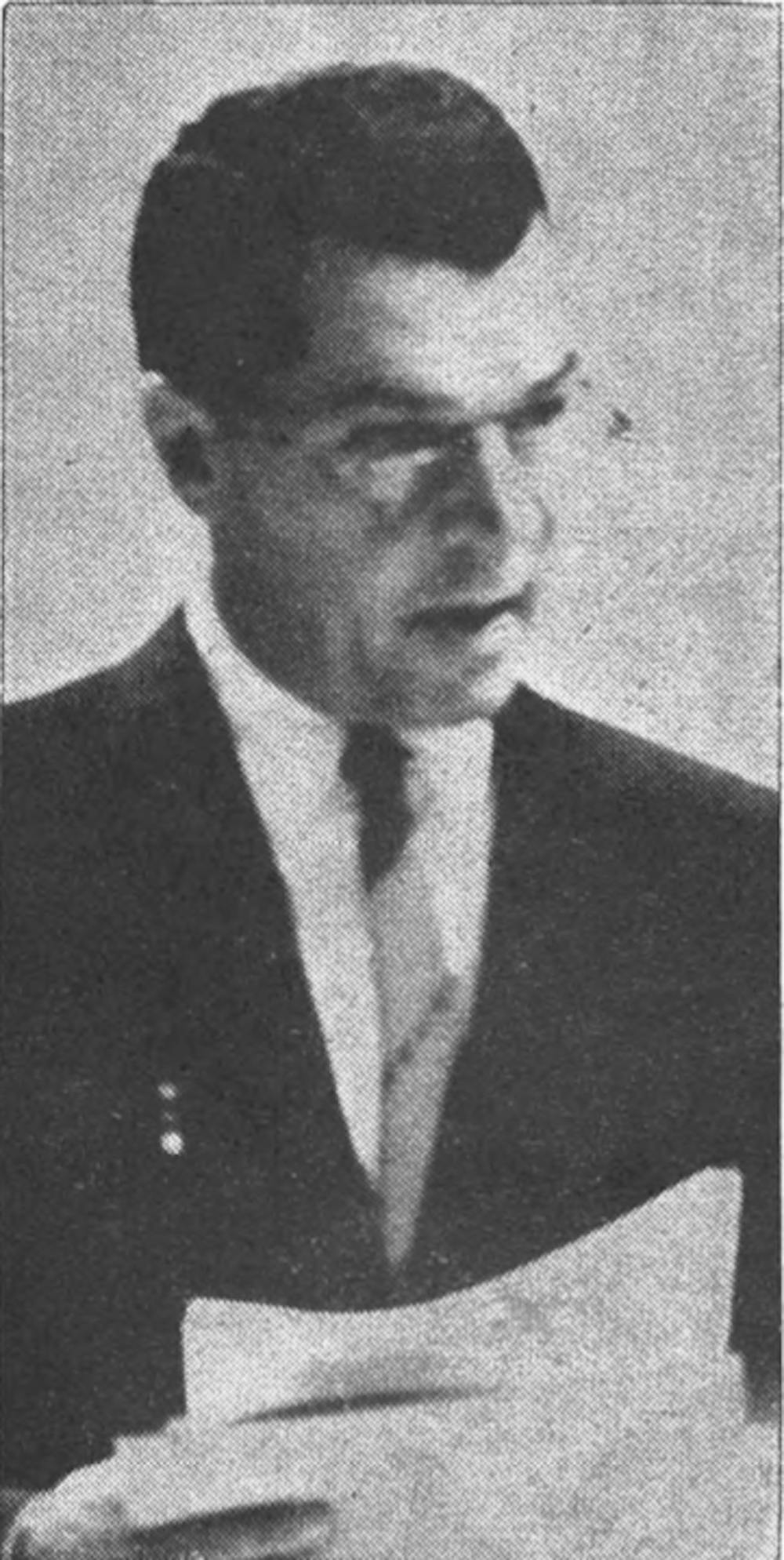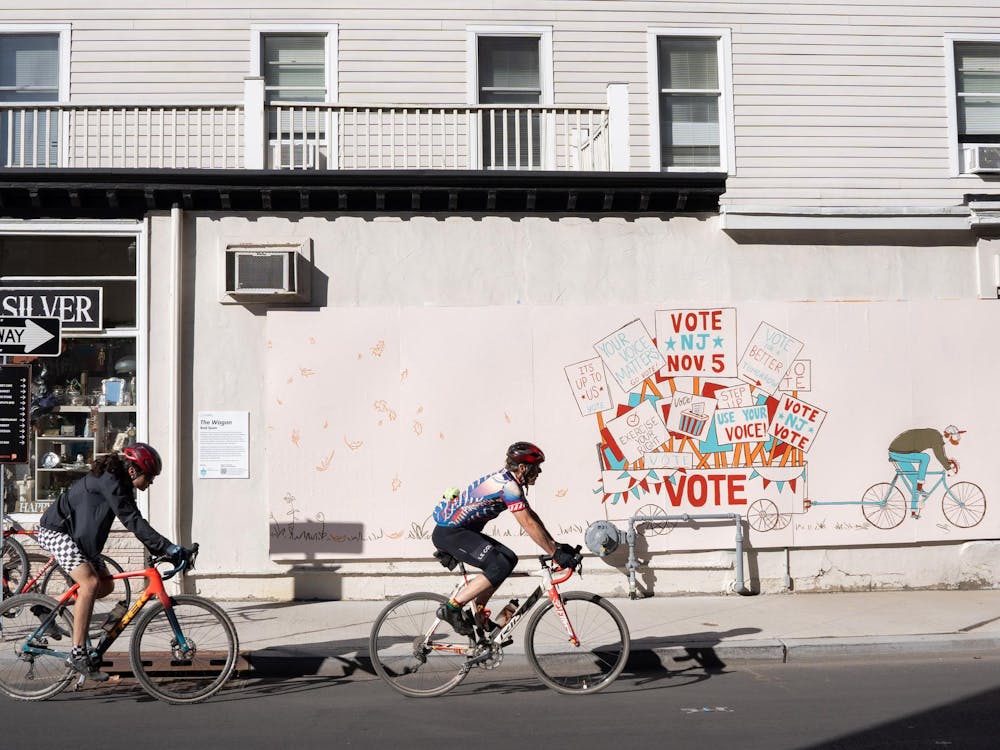In the spring of 1967, University President Robert Goheen ’40 thought he was off-the-record in an interview with Robert Durkee ’69 for The Daily Princetonian. He was wrong.
The next day, a headline in the ‘Prince’ read, “Goheen: ‘Co-education Is Inevitable.’“
In the next few weeks, Goheen received a flood of letters from alumni and trustees panicking that the University was going down the wrong path. People felt Goheen was shaping the University according to his bias.
In one letter to Goheen, trustee Don Danforth Jr. ’54 expressed concern that Goheen’s strong opinion would inhibit the progress of any committee created to examine co-education.
“In fact, a general faculty and administrative study committee, appointed by you and knowing your views that the admission of women is both advantageous and inevitable, would have difficulty recommending otherwise,” Danforth wrote on June 14, 1967.
Other trustees and alumni were also concerned that the issue of co-education could not be properly debated among the Board of Trustees if Goheen was so obviously biased.
“Furthermore, after the article in THE PRINCETONIAN based upon the interview with you, it is extremely unlikely that a faculty committee could arrive at an unbiased and disinterested recommendation after your views had been made known so clearly,” Harvey Mole ’29, another trustee, wrote on June 30, 1967.
The path to co-education was nuanced and complex. By the late 1960s, a trend towards co-education within other universities was emerging. Seventy-five percent of U.S. colleges were co-educational by 1965, and Harvard had been co-educational to a degree since 1879, with the founding of its sister institution, Radcliffe College. Goheen and his fellow administrators undertook a lengthy process consulting students, academics, experts, and others. They ultimately concluded that co-education was the best step forward for the University and finally admitting women for the first time on Sept. 8, 1969.
Goheen tried to be careful with his decision for the University to adopt co-education and expressed uncertainty about whether this decision would be the correct one.
It would be the first time in the then-223 year history of the University that women would be admitted as undergraduates. Women had matriculated at the graduate school since 1961, when the first female student was admitted for a doctoral degree in Turkish history. Women were also admitted to the University’s Critical Languages program, which brought women to the University for intensive language study, before the crucial decision in 1969.
When the ‘Prince’ wrote an editorial in favor of undergraduate co-education on Jan. 8, 1965, however, Goheen was dismissive of the debate that it stirred on campus.
“The fact is that The Daily Princetonian always needs a point to debate, and when no genuine issue is at hand, it sometimes creates one. In the case of co-education, the editors did not so much invent, as disinter, an old, much-discussed question,” Goheen wrote on Jan. 19, 1965.

But the seeds of the debate were planted.
Research from the admissions office had shown that many students were rejecting their admissions offers to Princeton in favor of Harvard and Yale. The primary reason, according to the research presented in the Patterson committee’s final report, was the introduction of co-education at Harvard.
In response to the debate, Goheen created the Committee on the Standing of Women in 1967 to examine undergraduate co-education. In his notes from his presentation to the Board of Trustees in June 1967 announcing the committee, he argued for the importance of investigating the co-education issue on the grounds that the University was losing applicants who wanted a co-educational experience. Goheen also contended that having women at the University would boost what the University could offer its students, both socially and educationally.
Goheen set out to acquire as much information as he could about the topic, believing that through extensive and open-minded research, he and the administration could decide upon the best course of action.
In 1967, Goheen wrote a letter to Gardner Patterson, the chair of the Committee on the Standing of Women, citing strong counterarguments to co-education. Margery Somers Foster, who was the dean of the all-women Douglass College in New Jersey at the time, had sent a letter to Goheen about the harms of co-education.
“I think [Foster] has a strong point in the ‘identity’ matter, at least for some young people, and I guess that’s why a measure of coordination as against co-education keeps having an appeal to me,” he wrote. “But I wait to be illumined by your investigation.”
Her objection expressed concerns that a co-educational model for a university would inhibit the growth of student identities. For instance, men should be able to attend college “undisturbed by having sex around them all the time.” Women, too, would be affected, Foster emphasized.
Instead, she believed that women should be afforded the opportunity to be first-class citizens, if only temporarily, in an institution devoted only to them.
“The basic point is the same, that the woman must establish her identity and get to understand and appreciate herself as a person before she gets mixed up with herself in relation to men,” Foster wrote in a letter to Goheen on co-education in December 1967. “The fact is that women are second-class citizens. One has only to look around him in the world to realize this.”
During the process, Goheen experienced additional pressure from members of the undergraduate body, and had multiple tangles with the ‘Prince.’ For instance, the ‘Prince’ acquired and published a draft of the committee’s early findings, an action which was met by anger from both the committee and the administration as a whole.
“The cause of education of women at Princeton is ill-served by the publication of a story based on a portion of an only partially argued, preliminary draft study,” Patterson wrote in a response letter to the editors of the ‘Prince’ on May 24, 1968.
In response to the conflict, fellow administrators quickly expressed alarm to Goheen, believing the ‘Prince’ to have once again damaged the administration’s attempts to appear unbiased.
“I am sure you realize how I and other members of the Board felt early in the discussion of the increased education of women at Princeton when you were quoted in the Princetonian as saying, ‘Co-education at Princeton is inevitable,’” wrote trustee George G. Finney, Class of 1922, in a letter to Goheen. “Knowing the feelings of so many alumni, the turn of events, unfortunately, can only be harmful to Princeton.”
Despite the hiccup, the committee released the final report, “The Education of Women at Princeton,” on July 12, 1968, with Goheen’s full endorsement.
“‘The Education of Women at Princeton’ is, I believe, a remarkably fine analysis,” Goheen wrote to alumni, students, and faculty. “I commend the thoroughness of its investigations and its judicious assessment of the issues. Its principal recommendations carry my firm endorsement.”
For Goheen, the committee’s objective analysis of the matter, which clearly showed the benefits of undergraduate co-education, was what persuaded him to solidly favor the policy.
The committee extensively surveyed alumni, faculty, students, and even high school students, performing careful financial analyses and researching other universities’ experiences with co-education, including Radcliffe — Harvard’s coordinate women’s college at the time. The coordinate college system provides separate colleges for men and women.
Although 82 percent of the undergraduate student body were in favor of undergraduate education for women at the University, 49 percent simply wanted a coordinate women’s college, compared to 33 percent who wanted a fully integrated system. In contrast, 72 percent of the faculty preferred full integration, with only 6 percent favoring a coordinating college.
“We believe that for Princeton to remain an all-male institution in the face of an evolving social system would be to go back on her tradition of seizing every opportunity to improve the quality and relevance of the education she provides,” the committee reported.
The result was a bound report of hundreds of pages that enthusiastically argued for undergraduate co-education, emphasizing the need for hasty implementation.
“Segregation of the sexes was fully consistent with our social institutions only a generation ago; but now, in the late 1960s, it is, quite simply, seen as anachronistic by most college students,” the committee reported.
Arthur Horton ’42 was the sole dissenter on the committee, believing that co-education should not be the University’s top priority, and that there were other far more important issues they could devote their resources, too. In spite of his dissent, however, Horton did express willingness to fully accept the trustees’ decision.
“In a way, you might say we are Butter & Egg men, finding out fairly suddenly that we are also peddling Cheese,” Horton wrote in a letter in 1968. “We have more to learn about the new product.”
Goheen tried to be open to whatever data he and the committee found, and ultimately came out of his work concluding that the case for co-education was undeniably strong. To Goheen, the results spoke for themselves — as, he believed, they should.
In the original version of his personal notes for his presentation to the Board of Trustees in 1967 — one year before the committee made their final report — he wrote that a university with such a profound a sense of obligation to the world could no longer “ignore the educational needs of one half of our society.”
But the man who attempted to dedicate himself to objectivity regarding undergraduate co-education knew early on that some sort of action had to be taken.
Later, in blue pen, Goheen would amend his statement. The University, he wrote, could no longer ignore the educational needs of “one half of the human race.”









